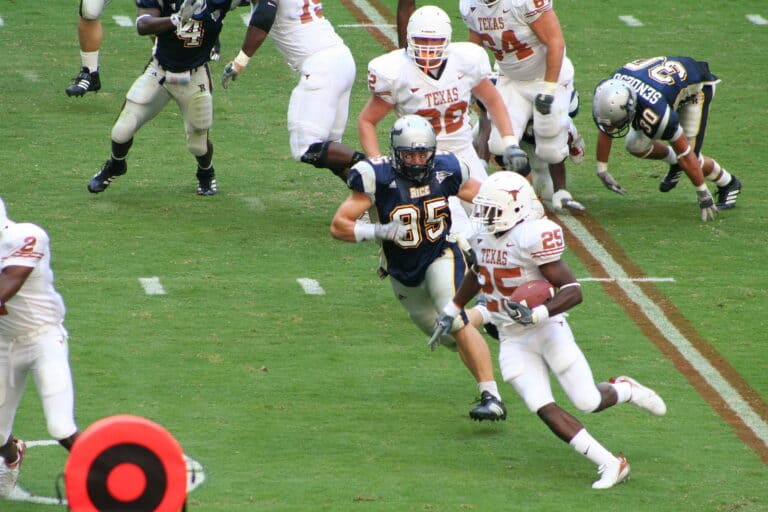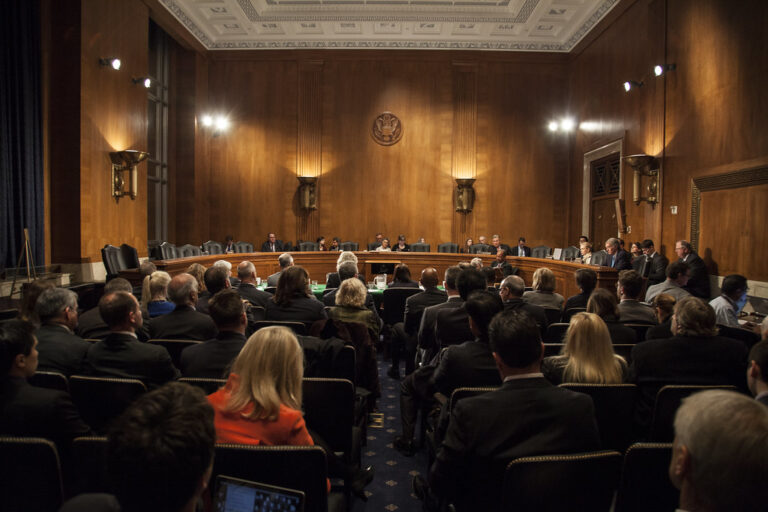One year ago, this blog featured a post that outlined various reasons why the restaurant industry’s use of tips in lieu of guaranteed wages had come to provoke, in the author’s words, “a firestorm of criticism”: that reliance on tips as a significant component of server take-home pay 1) destined many servers to earning a sub-minimum wage; 2) encouraged female servers to tolerate sexual harassment by their customers; and 3) resulted in pay discrimination unrelated to the quality of servers’ work, a consequence of customer biases and their impacts on the amounts tipped.
Since the post’s publication, this firestorm has continued unabated. In fact, Uber even pointed to customer bias as a reason not to add a tipping function to its ride-sharing app, as its competitor Lyft has done. Moreover, recent modeling by FiveThirtyEight illustrates the volatility of tip-based incomes in the restaurant industry, as well as divisions between different classes of restaurants vis-à-vis the tipped amounts that their servers typically earn, which further underscores the question whether tipping can serve as a reliable substitute for set pay.
In this vein, a recent opinion out of the U.S. Court of Appeals for the Tenth Circuit sheds new light on the shortcomings of tipping as a reliable form of compensation, highlighting the dangers posed to employees by the liminal space between “tips” and “wages” under the Fair Labor Standards Act (FLSA).
The Case of Aarica Romero
Aarica Romero worked as a server at one of Top-Tier Colorado’s restaurants, earning a wage $4.98 per hour. To justify paying Romero below the federal minimum wage of $7.25 an hour, Top-Tier Colorado invoked the FLSA’s tip-credit provision, which permits employers to pay a “tipped employee” a wage as low as $2.13 an hour so long as the tips earned by that employee “cover the gap” between the employee’s guaranteed hourly wage and the federal minimum wage. In other words, the FLSA allows restaurants to credit tips toward the amount that their tipped employees — like servers such as Romero — are legally entitled to earn.
However, while agreeing that she was a “tipped employee” under the FLSA for at least some of the time that she was at work in Top-Tier Colorado’s restaurant, Romero contended that she was not a “tipped employee” for all of the time. To understand Romero’s argument, consider a restaurant employee who has two discrete jobs: 1) waiting on tables as part of the server staff and 2) maintaining the restaurant’s equipment as the sole “maintenance man.” Waiting on tables earns the employee tips, but maintenance work does not. In Romero’s view — one shared by the U.S. Department of Labor (DOL) — the FLSA’s tip-credit provision does not extend to the latter: where an employee holds a “dual job,” and one job is tip-eligible and one is not, the employer must pay the employee the federal minimum wage of $7.25 per hour for the time spent doing the non-tip-eligible job. Romero argued that the restaurant simply paid her the same sub-minimum wage for all of her time at work — regardless of the job performed and whether that job could earn tips — thereby violating the FLSA.
In addition to challenging the wages that she earned based on a line between different types of jobs, Romero further contested the scope of the tip-credit provision, arguing that Top-Tier Colorado paid her too little for the time that she spent doing work that was “related” to tipped work, but was not itself tip-eligible. For instance, DOL regulations recognize that servers do not only wait on tables: a restaurant will likely require a waitress to spend at least some of her time on the clock also “cleaning and setting tables, toasting bread, making coffee and occasionally washing dishes or glasses.” Where an employee performs non-tipped work that is sufficiently related to tipped work — for instance, a waitress setting tables — the related non-tipped work does not constitute a second job for “dual job” purposes and falls within the auspices of the FLSA tip-credit provision.
Yet DOL draws distinctions between amounts the time that an employee spends doing related non-tipped work. According to DOL’s 2016 Field Operations Handbook, employers that require tipped employees to spend a “substantial amount of time” performing related non-tipped work — which DOL pegs at more than “20 percent of the hours worked in the tipped occupation in the workweek” — may not invoke the tip-credit provision “for the time spent in those duties.” While Romero and Top-Tier Colorado treat an earlier edition of the Handbook as applicable, the upshot is the same: if an employer requires an employee to spend too much time on related non-tipped work, then the employer can no longer use the tip-credit provision to cover that work, and use of the tip-credit provision where it cannot apply violates the FLSA.
Romero Goes to Court
The district court rejected Romero’s arguments. Relying on a 1960 case from outside the Tenth Circuit — and decided six years before the FLSA included the tip-credit provision — the district court concluded that if an employee’s total weekly pay (wages plus tips), divided by total weekly hours worked, at least equaled the legally required weekly minimum wage, then the employer had not violated the FLSA. And because Romero had not alleged in her complaint that the restaurant had not paid her the required weekly minimum wage, as based on this formula, the district court dismissed her complaint for failure to state a claim.
On appeal, a three-judge panel of the Tenth Circuit reversed. To the panel, the district court’s approach “conflates two distinct concepts”: “tips earned” and “wages paid.” And under the FLSA’s tip-credit provision as interpreted by DOL, this distinction makes a significant legal difference, because employers do not necessarily have the legal right to count “tips earned” as “wages paid.” Rather, the tip-credit provision permits employers to treat some tips as wages, not automatically all. Therefore, the panel concluded that the “threshold question” is whether Top-Tier Colorado could treat Romero’s tips as wages under the tip-credit provision.
Answering the “Threshold Question”
On remand, the question that the district court must answer turns on both on the types of work that Romero was doing (tip-eligible and non-tip-eligible, related non-tipped work and unrelated non-tipped work) and how much time she spent doing each type.
Under DOL regulations, it is the employer’s obligation — here, Top-Tier Colorado’s — to keep accurate records related to employee wages and hours: the hours worked in tip-eligible and non-tip-eligible jobs, the total tips received by an employee and the corresponding amount of tip credit taken by the employer, and the wages paid for hours worked in non-tip-eligible jobs. However, the incentives created by the tip-credit provision may undercut employer adherence to this obligation; after all, where the maintenance of accurate records collides with an opportunity to save money — especially given the ambiguity surrounding the tip-credit provision’s scope and substance — some number of employers may very well choose the latter, underpaying their employees in the process.
Luckily, at least some courts have come to recognize and compensate for the difficulties faced by allegedly underpaid employees in meeting the standard burden of persuasion in these cases. Therefore, “where an employer’s payroll records are inaccurate or inadequate,” an employee can prove a violation of the FLSA by producing “sufficient evidence to show the amount and extent of [his] work as a matter of just and reasonable inference.” An employee’s “recollection alone” can suffice to meet this burden. Then, to disprove the violation, the employer must “come forward with evidence of the precise amount of work performed or with evidence to negative the reasonableness of the inference to be drawn from the employee’s evidence.” In other words, the courts have crafted a burden-shifting regime in response to the incentive structure within which employers and employees operate. Such a move goes far toward vindicating the purpose of the FLSA: ensuring that employees like Romero are paid their legal due.










Daily News & Commentary
Start your day with our roundup of the latest labor developments. See all
November 23
Workers at the Southeastern Pennsylvania Transportation Authority vote to authorize a strike; Washington State legislators consider a bill empowering public employees to bargain over workplace AI implementation; and University of California workers engage in a two-day strike.
November 21
The “Big Three” record labels make a deal with an AI music streaming startup; 30 stores join the now week-old Starbucks Workers United strike; and the Mine Safety and Health Administration draws scrutiny over a recent worker death.
November 20
Law professors file brief in Slaughter; New York appeals court hears arguments about blog post firing; Senate committee delays consideration of NLRB nominee.
November 19
A federal judge blocks the Trump administration’s efforts to cancel the collective bargaining rights of workers at the U.S. Agency for Global Media; Representative Jared Golden secures 218 signatures for a bill that would repeal a Trump administration executive order stripping federal workers of their collective bargaining rights; and Dallas residents sue the City of Dallas in hopes of declaring hundreds of ordinances that ban bias against LGBTQ+ individuals void.
November 18
A federal judge pressed DOJ lawyers to define “illegal” DEI programs; Peco Foods prevails in ERISA challenge over 401(k) forfeitures; D.C. court restores collective bargaining rights for Voice of America workers; Rep. Jared Golden secures House vote on restoring federal workers' union rights.
November 17
Justices receive petition to resolve FLSA circuit split, vaccine religious discrimination plaintiffs lose ground, and NJ sues Amazon over misclassification.